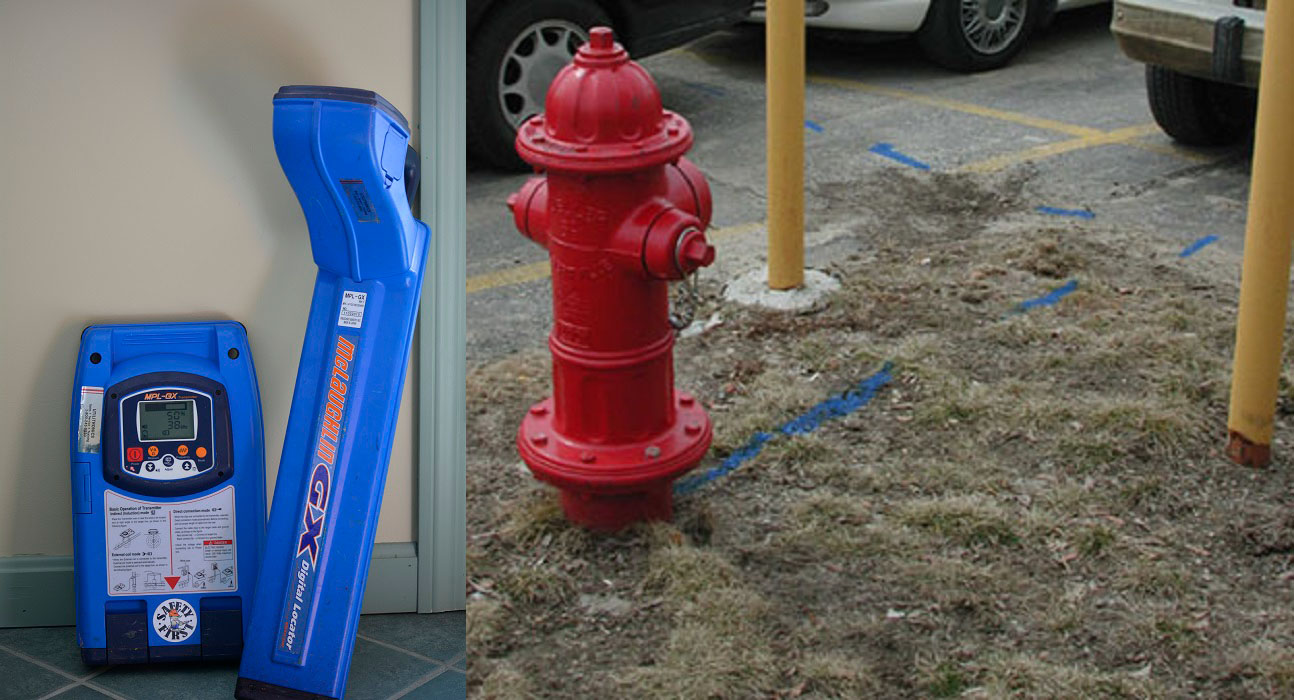RSI uses a simple EM induction hand-help pipe and cable locator to detect buried utilities and cables. This tool operates in 4 different modes: (1)Receiver only mode for detecting 60 cycle power (or harmonics thereof), (2)Direct Contact/Clamp mode where the transmitter hooks the positive lead directly to the pipe or cable while the negative lead is grounded, (3)Direct-coupled/ Inductive mode where an inductive clamp is place around the pipe or cable, or the transmitter placed over the inferred trend of the buried utility, and (4) Remote beacon mode where a transponder beacon is placed on a fiberglass rod and threaded through non-conductive pipes and traced from the surface using a receiving antenna.
Mode #1- Receiver only mode only detects active electric lines. The disadvantage of this mode is that if the rebar matt is not grounded or the soil is conductive, false readings can occur, especially if the receiver's gains are turned up high. Also, if the electrical cable is located within a heavily reinforced concrete duct bank, it may be shielded, and hence, not detectable.
Mode #2- Direct Contact/Clamp-on is the best method for directly tracing pipes, although, its success is contingent upon having a good ground and the pipe's outer surface being conductive enough to induce a signal down it. In some instances, such as gas transmission lines, pipe segments are isolated from each other with insulators so that self-potential (i.e. naturally-occurring energy from the earth's field) does not build up along the pipeline. Also, cast iron, especially when rusty, may not transmit a current well. Also, this mode can not be used for PVC and plastic pipes, as they do not transmit current at all.
Mode #3- Direct-coupled/Inductive mode is another reliable way of inducing a current down a pipe. This, like Mode #2, relies on the pipe being conductive enough to induce a signal through it.
Mode #4- Remote Beacon mode can not be used for iron, steel, and otherwise conductive pipes. It can only be used for non-conducting pipes, such as vitrified clay, asbestos concrete, PVC, plastic, and occasionally reinforced concrete. This method only works, however, if there is direct access to one end of the utility, and if it is located no more than 8 feet below grade.
Pipe and cable locators have a limited depth of investigation, especially when rebar is present. Under good circumstances, many manufacturers claim their locators can achieve up to 7 feet of investigative depth. From experience, they reliably go only 4 to 5 feet below grade. Above ground electrical sources, such as transformers, can interfere with the pipe and cable locator and cause false readings. Hence, for this and other reasons, survey data may be difficult to interpret. The effectiveness of tracing individual utility lines may be hampered by the proximity of other nearby utilities, especially if the soil surrounding them is conductive.
